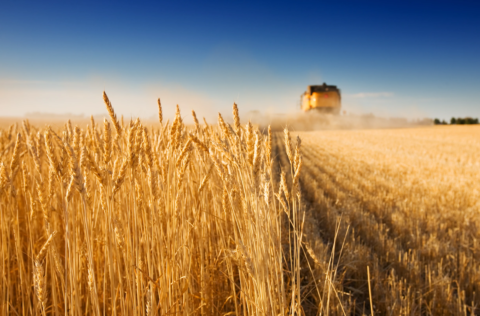Press release: UK Flour Millers believe new varieties will reverse decline in Group 1 wheat production
26 Jun 2025
2 mins

UK FLOUR MILLERS BELIEVE NEW VARIETIES WILL REVERSE DECLINE IN GROUP 1 WHEAT PRODUCTION
The recent results of the AHDB Planting and Variety Survey1 highlight the ongoing decline in UK breadmaking wheat production and the important role new Group 1 varieties could play in the market argues UK Flour Millers head of technical and regulatory affairs, Joe Brennan.
“The survey shows the predicted total wheat area for harvest 2025 is 1.62Mha, down 102,000 hectares on the 10-year average. It’s an average that includes the exceptionally small areas of 2020 and 2024, when wheat cropping was severely disrupted by extreme weather.”
Against the backdrop of a shrinking UK wheat area, breadmaking wheat faces a further challenge from the declining share of Group 1 and 2 varieties. The survey shows the proportion of the wheat area drilled with Group 1 varieties is declining from 24% in 2024 to only 19% for harvest 20251, the lowest level in 10 years.
But Joe says the new Group 1 winter wheat varieties, SY Cheer and KWS Vibe, could help reverse this trend, after a six-year period in which no new Group 1 winter wheats joined the Recommended List (RL).
“There could not have been a better time for new Group 1 winter wheats to join the Recommended List. SY Cheer and KWS Vibe show strong disease resistance ratings and excellent grain quality, maximising the chance of achieving a full premium, and we expect they will be popular with growers.”
Projected miller demand for wheat is strong, with the sector using just under 5 million tonnes each season. This demand is stable and the UK Flour Millers industry usage survey shows that in years where domestic production is high and quality is good, homegrown usage has reached 85%.
“In 2022-2023, 83% of the wheat we used was homegrown. But since then, Group 1 production has declined significantly, we estimate by just under a third.”2
Given this production decline against stable milling industry demand for milling wheat, it is hoped that new varieties will reignite grower interest in the Group 1 category.
“Millers prefer to use homegrown breadmaking wheat when it is available at the right quality. Alongside food security, there are other advantages. For example, we are closely involved in UK wheat variety development and better understand the quality nuances of domestic varieties. SY Cheer and KWS Vibe, as with all milling varieties on the RL, were tested over three years to understand seasonal variation in functionality. Potential new Group 1 varieties are also tested at commercial scale before the Group is confirmed, to give the supply chain confidence in the rating.”
Group 2 wheat varieties are also an important part of UK milling wheat production and are used by some millers. A number of new, high-yielding Group 2s have joined the RL this year and will be of interest to growers.
“Not all mills use Group 2 wheats and so understanding your local market preferences is crucial when selecting these varieties.” added Joe.
Notes to readers
UK Flour Millers is the trade association representing the UK flour milling industry. There are 32 member companies operating 51 flour mills. Millers use 5 million tonnes of wheat to make 4 million tonnes of flour each year. In a typical year, 80-85% of the wheat used by UK millers is homegrown.
Flour is an ingredient in 30% of food products and provides approximately 20% of the nation’s food energy requirements, playing a critical role in domestic food security.
A data file setting out the UK Flour Millers estimate of UK Group 1 wheat production is issued alongside this press release.
A fuller UK Flour Millers briefing document, setting out Group 1 production prospects for harvest 2025, is available here.
References
1. https://ahdb.org.uk/cereals-oilseeds/planting-variety-survey-results
2. Attached data file – UK Group 1 wheat production estimates (as at 20 June 2025)
